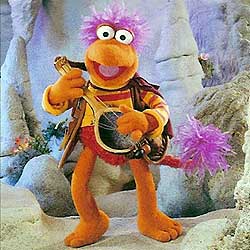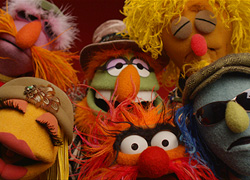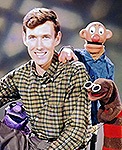Buck-Beaver
Well-Known Member
- Joined
- Apr 16, 2002
- Messages
- 4,174
- Reaction score
- 162
Oh i agree and my point is really more general and philosophical and not really about specifically your situation.
I think two of the limitations of the board (and the net in general) is that there is only so much than can be explained in writing (and pictures) and the other is time. For example, there are a couple of tutorials I've been meaning to write for about two years (one of which has to do with proper gluing technique) but I never seem to be able to get around to it.
There's nothing better than attending a course like Privett's and actually seeing something being done with your own eyes and having it explained well. I think that is the real value of a course, and if I was to organize one I would make that the selling point, not learning "secrets". Think of it this way, if you take a college course on anything they don't put silly restrictions on you like. So why should puppet building be any different?
Honestly, I've found that the most talented people in almost any field are also usually the most generous in terms of sharing knowledge and experience because they understand that most things - art, science, technology - get built on the back of what came before. People who try to restrict knowledge and information in their field are often very insecure about their work.
When it comes to puppets, if you look at Dave's puppets, or mine or the puppets of almost anyone else on this board we're all painting on the canvas Jim Henson invented. By all accounts, during his lifetime he had an "open shop" policy and was a very generous with knowledge and information.
I'm not knocking Dave or anyone else, I'm just saying that you should take your cues from the master.
I think two of the limitations of the board (and the net in general) is that there is only so much than can be explained in writing (and pictures) and the other is time. For example, there are a couple of tutorials I've been meaning to write for about two years (one of which has to do with proper gluing technique) but I never seem to be able to get around to it.
There's nothing better than attending a course like Privett's and actually seeing something being done with your own eyes and having it explained well. I think that is the real value of a course, and if I was to organize one I would make that the selling point, not learning "secrets". Think of it this way, if you take a college course on anything they don't put silly restrictions on you like. So why should puppet building be any different?
Honestly, I've found that the most talented people in almost any field are also usually the most generous in terms of sharing knowledge and experience because they understand that most things - art, science, technology - get built on the back of what came before. People who try to restrict knowledge and information in their field are often very insecure about their work.
When it comes to puppets, if you look at Dave's puppets, or mine or the puppets of almost anyone else on this board we're all painting on the canvas Jim Henson invented. By all accounts, during his lifetime he had an "open shop" policy and was a very generous with knowledge and information.
I'm not knocking Dave or anyone else, I'm just saying that you should take your cues from the master.

 Welcome to the Muppet Central Forum!
Welcome to the Muppet Central Forum! Back to the Rock Season 2
Back to the Rock Season 2 Sesame Street Season 54
Sesame Street Season 54 The Muppets Mayhem premieres
The Muppets Mayhem premieres Bear arrives on Disney+
Bear arrives on Disney+ Sam and Friends Book
Sam and Friends Book